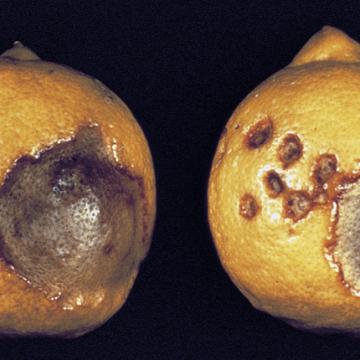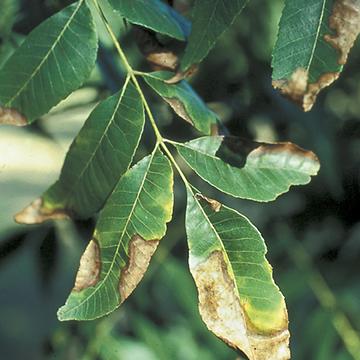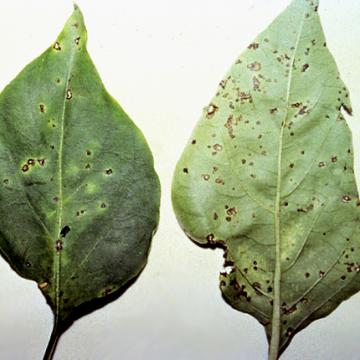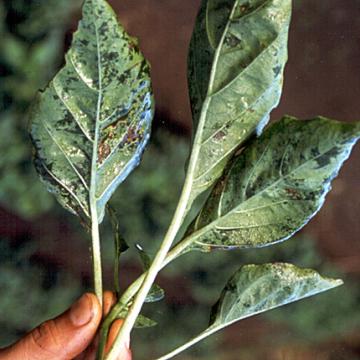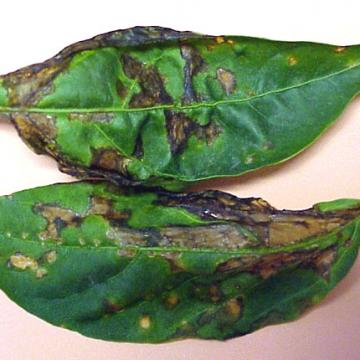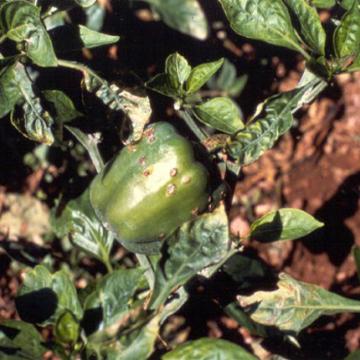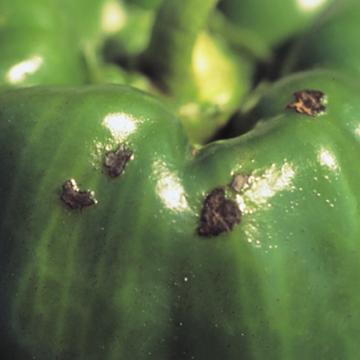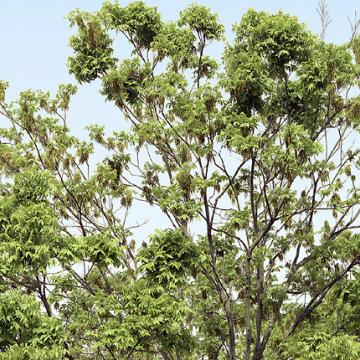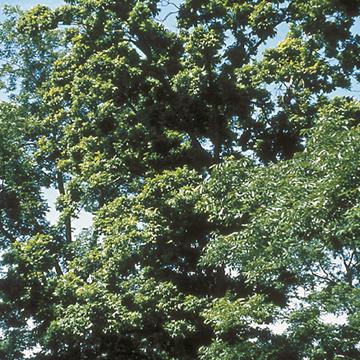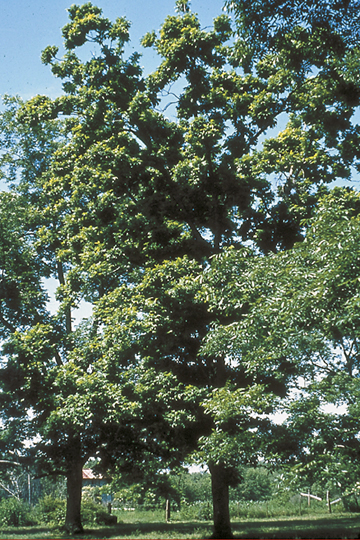DISEASE: Bacterial blast and black pit
HOST: Citrus (Lemon)
The term "black pit" refers to black lesions on fruit, which may be specks or large, sunken pits as seen here. They also may be light tan, later becoming reddish brown to black.
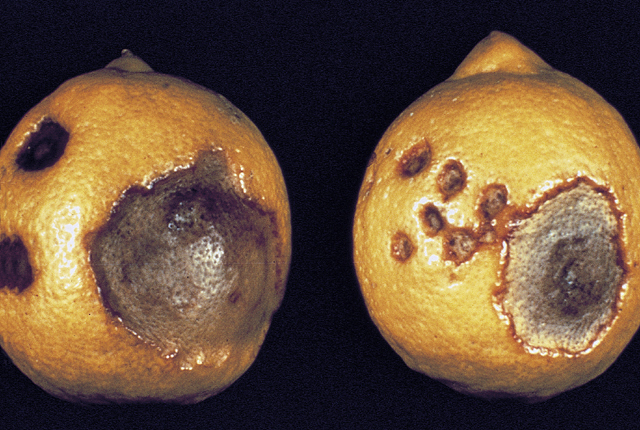
Bacterial blast and black pit | Citrus (Lemon)
DISEASE: Bacterial blast and black pit
HOST: Citrus (Lemon) (Citrus limon)
PATHOGEN: Pseudomonas syringae pv. syringae
SOURCE: J. Menge
DISEASE: Bacterial leaf scorch
HOST: Pecan
Pecan with necrotic scorched leaves with distinct dark lines between healthy and diseased tissues.
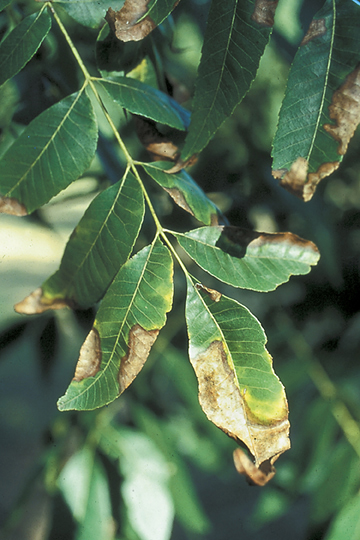
Bacterial leaf scorch | Pecan
DISEASE: Bacterial leaf scorch
HOST: Pecan (Carya illinoinensis)
PATHOGEN: Xylella fastidiosa
SOURCE: T. Brenneman
DISEASE: Bacterial spot
HOST: Pepper
Leaves with necrotic spots. The bacterial spot xanthomonads are Xanthomonas euvesicatoria, X. vesicatoria, and X. gardneri.
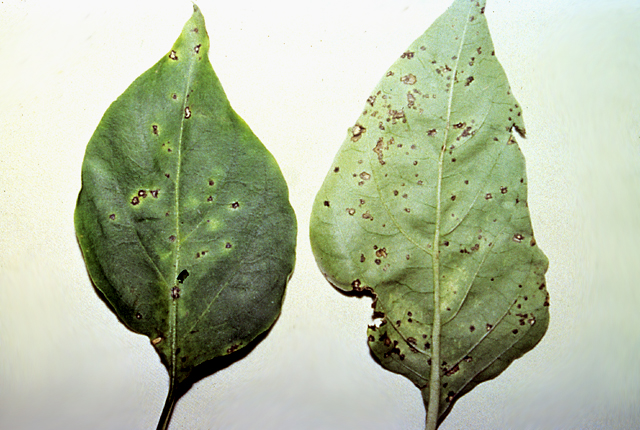
Bacterial spot | Pepper
DISEASE: Bacterial spot
HOST: Pepper (Capsicum annuum)
PATHOGEN: Xanthomonas bacterial spot pathogens
PATHOGEN SYNONYM: Xanthomonas axonopodis pv. vesicatoria
SOURCE: APS
DISEASE: Bacterial spot
HOST: Pepper
Leaves with water-soaked and brown necrotic lesions. Disease xanthomonads are Xanthomonas euvesicatoria, X. vesicatoria, and X. gardneri.
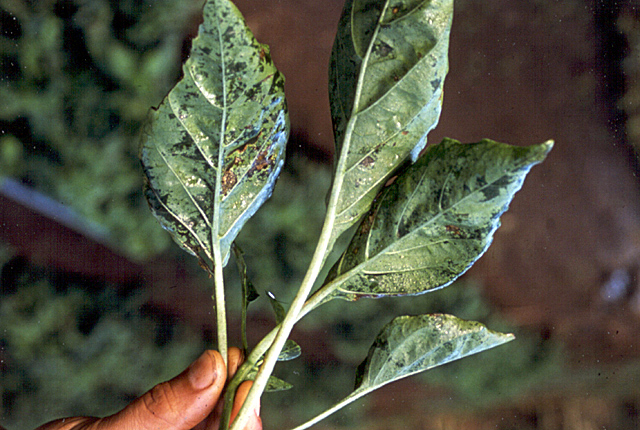
Bacterial spot | Pepper
DISEASE: Bacterial spot
HOST: Pepper (Capsicum annuum)
PATHOGEN: Xanthomonas bacterial spot pathogens
PATHOGEN SYNONYM: Xanthomonas axonopodis pv. vesicatoria
SOURCE: B. S. Kim
DISEASE: Bacterial spot
HOST: Pepper
Leaves with broad necrotic lesions. Disease xanthomonads are Xanthomonas euvesicatoria, X. vesicatoria, and X. gardneri.
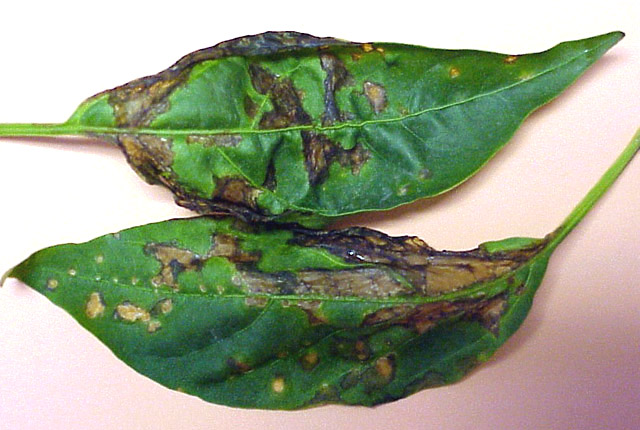
Bacterial spot | Pepper
DISEASE: Bacterial spot
HOST: Pepper (Capsicum annuum)
PATHOGEN: Xanthomonas bacterial spot pathogens
PATHOGEN SYNONYM: Xanthomonas axonopodis pv. vesicatoria
SOURCE: J. Jones
DISEASE: Bacterial spot
HOST: Pepper
Infected fruit with brown, wartlike lesions. The bacterial spot xanthomonads are Xanthomonas euvesicatoria, X. vesicatoria, and X. gardneri.
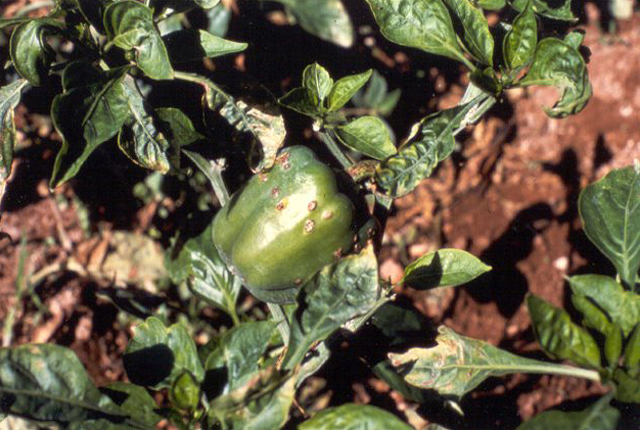
Bacterial spot | Pepper
DISEASE: Bacterial spot
HOST: Pepper (Capsicum annuum)
PATHOGEN: Xanthomonas bacterial spot pathogens
PATHOGEN SYNONYM: Xanthomonas axonopodis pv. vesicatoria
SOURCE: A. Alvarez
DISEASE: Bacterial spot
HOST: Pepper
Close-up of fruit with enlarged lesions with cracked, roughened, wartlike appearance. Disease xanthomonads are Xanthomonas euvesicatoria, X. vesicatoria, and X. gardneri.
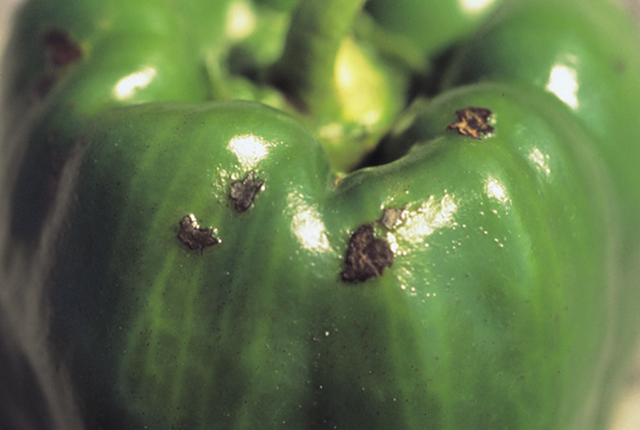
Bacterial spot | Pepper
DISEASE: Bacterial spot
HOST: Pepper (Capsicum annuum)
PATHOGEN: Xanthomonas bacterial spot pathogens
PATHOGEN SYNONYM: Xanthomonas axonopodis pv. vesicatoria
SOURCE: APS
DISEASE: Bunch disease
HOST: Pecan
Pecan exhibiting bunch symptoms at ends of branches. This disease is thought to be caused by a phytoplasma similar to the walnut bunch pathogen in the X-disease group.
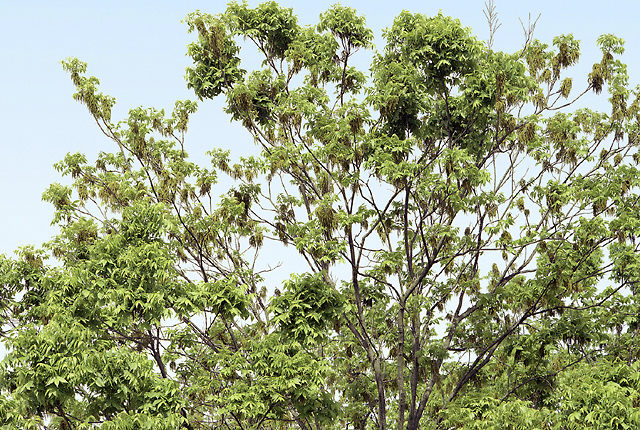
Bunch disease | Pecan
DISEASE: Bunch disease
HOST: Pecan (Carya illinoinensis)
PATHOGEN: 'Candidatus Phytoplasma pruni'
PATHOGEN SYNONYM: Phytoplasma X-disease group
SOURCE: W. Sinclair


